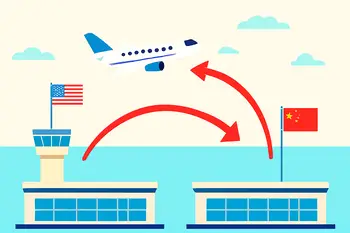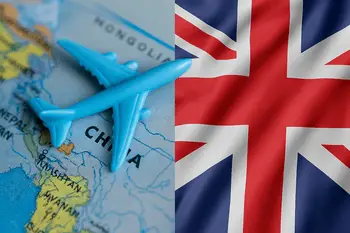
This guide explains how US to China flight routes operate, which airports and airlines serve them, how to choose nonstop versus one-stop options, booking and award strategies, visa and transit rules, and practical tips to make long-haul travel smoother.
It links to a live list of available flights from the United States to China and includes tables that compare major route pairs, durations, and carrier options.
Why route choice matters
Choosing the right route affects total trip time, cost, risk of missed connections, and convenience for immigration and customs.
Nonstop flights reduce connection risk and total travel time but can be pricier and scarcer depending on season and demand.
One-stop itineraries increase schedule flexibility and often reduce price, but they add transfer complexity and possible overnight layovers.
Understanding the tradeoffs between nonstop, one-stop via Asian hubs, and one-stop via Gulf carriers is the first step to finding the optimal itinerary.
Major U.S. gateways and Chinese arrival airports
U.S. gateway airports
Major U.S. gateways for China are concentrated on the West Coast and at a few key Midwestern and East Coast hubs. West Coast airports often offer the most nonstop choices and shortest flight times to China.
West Coast
Los Angeles (LAX), San Francisco (SFO), and Seattle (SEA) frequently host nonstop services to Beijing, Shanghai, Guangzhou, and other Chinese cities.
Midwest and East Coast
New York (JFK/EWR), Dallas/Fort Worth (DFW), and Detroit (DTW) provide long-haul nonstop or one-stop options linking major U.S. population centers to Chinese gateways.
Chinese gateways and regional hubs
China’s gateway airports are diverse, reflecting geographic, economic, and regional travel demand.
Primary gateways
Beijing Capital/Daxing Airport (PEK/PKX) and Shanghai Pudong (PVG) are the largest international gateways served by numerous long-haul carriers from the United States.
Secondary and regional gateways
Guangzhou (CAN), Shenzhen (SZX), Chengdu (CTU), Xiamen (XMN), Hangzhou (HGH), Chongqing (CKG), and others expand access beyond Beijing and Shanghai and are often reachable via nonstop connections from select U.S. cities or via a single stop.
Nonstop vs one-stop routings: pros and cons
Nonstop flights
Nonstop flights minimize total journey time and reduce the chance of missed connections or lost luggage.
Nonstops are convenient for business travelers and families seeking simplicity.
Nonstop disadvantages include higher fares when capacity is limited and fewer departure city choices.
One-stop itineraries via Asian hubs
One-stop itineraries routed through Tokyo (HND/NRT), Seoul (ICN), Hong Kong (HKG), Taipei (TPE), or Singapore (SIN) often deliver lower fares and more schedule options.
They are a good choice if you’re flexible on time and want to expand carrier choice.
The downside is added transfer time, possible terminal changes, and risk of missed connections.
One-stop itineraries via Middle Eastern hubs
Doha (DOH) and Dubai (DXB) provide high-frequency connections and competitive pricing.
These routings can be attractive when flying to southwestern or central China but usually increase total flight time due to routing geometry.
Typical flight durations and what affects them
Representative nonstop durations
- West Coast (LAX/SFO/SEA) → Shanghai or Beijing: approximately 11–14 hours airborne.
- Midwest/East Coast (JFK/EWR/DTW) → Beijing or Shanghai: approximately 13–16 hours airborne.
- West Coast → southern Chinese cities (Guangzhou, Shenzhen): typically 12–15 hours depending on routing.
Factors that change flight times
- Jet stream and prevailing winds affect direction-dependent flight time: eastbound flights often run faster than westbound.
- Airspace permissions, geopolitical events, and seasonal weather (typhoon season, winter storms) can force rerouting and lengthen flights.
- Aircraft type and airline operational choices influence block time through cruise speed and payload limits.
Airlines and alliances serving US–China routes
U.S. carriers
United, Delta, and American operate or partner on major transpacific routes linking U.S. hubs to Beijing, Shanghai, and secondary Chinese cities.
These carriers often code-share with partner airlines and offer award redemptions through alliance networks.
Chinese carriers
Air China, China Eastern, China Southern, Hainan, Xiamen Airlines, Sichuan Airlines, and others operate direct services to U.S. gateways and provide strong domestic connections within China.
Middle Eastern and Asian carriers
Qatar Airways, Emirates, Cathay Pacific, Japan Airlines, Korean Air, and Singapore Airlines provide one-stop connections linking the U.S. and China with varied routing options that can be more economical or offer higher service levels.
Representative route comparison table
| Route pair | Typical nonstop duration | Main carriers | Notes |
|---|---|---|---|
| LAX – PVG | 12–14 hours | China Eastern; United; Delta | Multiple daily options on peak days |
| SFO – PEK | 12–14 hours | United; Air China | Strong West Coast connectivity |
| JFK – PVG | 14–16 hours | China Eastern; China Southern; United (seasonal) | Fewer nonstop options; consider one-stop |
| SEA – PEK | 11–13 hours | Hainan Airlines | Seattle is a growing Pacific hub |
Sources: Flight schedule aggregators; airline published timetables; airport route maps.
Booking strategies and award travel tips
When to buy and how to find deals
Book early for nonstop inventory, especially during peak travel seasons and major Chinese holidays.
Use fare alerts and flexible date searches to spot sales and mistake fares.
Consider nearby airports for better pricing if you have flexibility in departure city.
Award bookings and alliance strategies
Check award space across alliances: Star Alliance for United and Air China partners, oneworld for American and partner carriers, and SkyTeam for Delta-related partners.
Mixing alliances on roundtrip itineraries may require separate tickets or positioning flights but can yield better overall value.
Combining nonstop and one-stop for value
If nonstop premium cabins are full or expensive, book a one-stop in premium economy or business through Asia or a Gulf hub to improve comfort without the nonstop premium price.
Use of flexible and refundable fares
When routes are evolving or schedules are tentative, pay a bit more for flexible or refundable tickets to reduce the risk of change fees and allow easy rebooking if carriers adjust service.
Transit rules, visa, and entry considerations for U.S. travelers
Visa overview
U.S. citizens typically need a visa to enter China for tourism, business, or extended stays.
Transit visa exemptions exist under specific conditions.
Verify visa requirements with the Chinese consulate or an official visa service before travel.
Transit without visa (TWOV) and short-term visa-free transit
Many major Chinese airports offer 24/72/144/240-hour visa-free transit options depending on itinerary and destination within China.
Eligibility rules and allowable destinations vary; confirm current policies and required documentation prior to booking.
Health and documentation
Ensure your passport validity meets entry requirements and carry proof of onward travel for transit.
Check for any health documentation or testing requirements active at travel time and account for extra time at airports for document checks.
Connection planning and terminal logistics
Minimum connection times and recommended buffers
Allow at least 2.5–4 hours for international-to-international connections in large hubs, longer if transferring between terminals or when re-clearing security and immigration.
Plan extra time for baggage recheck, security, and transit visas if required.
Airport transfer tips
- Check if your connection requires leaving the sterile area or rechecking baggage.
- Confirm whether your carriers have interline agreements to transfer luggage automatically.
- When changing airlines or alliances, verify terminal locations ahead of arrival to plan transfers efficiently.
Cabin choice and in-flight comfort for long-haul travel
Seat class choices
Premium economy and business class provide substantial comfort gains on 11–16 hour flights.
For price-sensitive travelers, economy with seat selection for extra legroom, or strategically purchased economy-plus seats, can improve long-haul comfort.
Jet lag and sleep planning
Use eastbound and westbound sleep strategies to align with local time at destination, time exposure to daylight to shift circadian rhythm, and consider short naps rather than long daytime sleep to adapt faster.
Health precautions
Stay hydrated, move frequently, wear compression socks for long flights, and avoid heavy alcohol.
Pack a small travel health kit and any prescription medicines in carry-on luggage.
Practical baggage and customs advice
Baggage allowances and fees
Long-haul international flights typically include at least one checked bag in standard fares on full-service carriers.
Low-cost or special fares may exclude checked luggage; always check baggage rules to avoid surprise fees.
Customs declarations and prohibited items
Declare necessary items per Chinese customs requirements.
Be aware of limits on currency, food items, and restricted goods. Pack receipts for expensive electronics to streamline customs on arrival.
Typical disruptions and how to manage them
Common disruption causes
Weather, airspace restrictions, technical delays, and schedule adjustments due to bilateral permissions are the most common causes of irregular operations on US–China routes.
Rebooking and protection strategies
Purchase flexible tickets or travel insurance that covers schedule changes and cancellations.
When possible, use airline apps for real-time rebooking options and monitor carrier advisories before heading to the airport.
Trends and what to expect in the near term
Network restoration and frequency increases
Major carriers continue to restore and expand service as demand stabilizes.
Watch for schedule announcements that add nonstop frequencies and new city pairs.
Market-driven adjustments
Airlines may increase or reduce frequencies in response to load factors and seasonality.
Expect dynamic changes around major holidays and business travel cycles.
How to choose the best itinerary for your priorities
Prioritize time
Choose nonstop routes from West Coast gateways when total travel time is the top priority.
Prioritize cost
Compare one-stop routings through high-frequency Asian hubs and consider nearby departure airports and travel dates with flexible fares.
Prioritize reliability
Choose carriers with strong on-time performance on the chosen route, check aircraft type for long-haul comfort, and prefer morning departures to reduce downstream disruption risk.
Example itineraries and decision framework
Shortest travel-time example
LAX → PVG nonstop in business class for 13 hours door-to-door to reduce connection risk.
Cost-conscious example
JFK → ICN → PVG one-stop on competitive Asian carrier for lower fare, careful connection planning, and potential overnight in ICN for a city break.
Balanced award strategy
Book a Star Alliance one-way award SFO → PVG on United to access partner inventory, then return on a separate carrier if award space is limited.
Live flight resources and the interlink you requested
For up-to-date schedules and a curated list of available US to China flights, consult a live route list such as this detailed page with flight availability by U.S. city: https://ikkyinchina.com/china-tube/list-of-available-flights-to-china/available-flights-to-china-from-usa/
Additional real-time tools:
- U.S. Department of State travel guidance: https://travel.state.gov
- FlightConnections for route maps and schedules: https://www.flightconnections.com
- FlightAware for live flight tracking: https://www.flightaware.com
Final recommendations checklist
Before you book
- Confirm visa or transit visa requirements for your itinerary.
- Compare nonstop versus one-stop total travel time and price.
- Monitor award space across alliances if using points.
At booking
- Choose seats with extra legroom for long flights.
- Buy flexible fares if travel dates might change.
- Verify baggage allowances and fees for all segments.
Before departure
- Arrive early for international check-in and document checks.
- Pack essential medications and travel documents in carry-on.
- Download airline apps for real-time updates and mobile rebooking.
Sources and further reading
- U.S. Department of State travel information for China: https://travel.state.gov
- FlightConnections route maps and schedules: https://www.flightconnections.com
- FlightAware live tracking and historical flight data: https://www.flightaware.com
- Ikky in China flight availability list: https://ikkyinchina.com/china-tube/list-of-available-flights-to-china/available-flights-to-china-from-usa/
- Airline published timetables and network maps available on carrier websites


